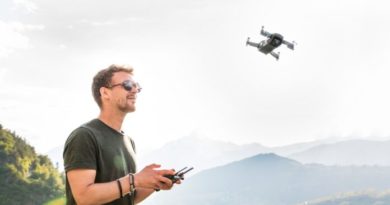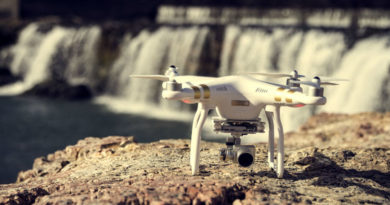Are Drones the Key to Tracking and Reducing Invasive Species?
Guest post by Emily Folk
Invasive species are a dramatic threat to ecosystems around the world. Over the years, as we’ve realized the kind of menace these plant and animal species present, we’ve explored various ways to protect native species and remove the invaders.
These have been met with various levels of success. New technology has made it easier to track invasive species, and now there’s a new tool in the arsenal — drones. Are drones the key to monitoring and reducing invasive species in this native environment?
Why Are Invasive Species a Threat?
When an invasive species is introduced into an area, it often has no natural predators. That means there is nothing to keep their populations in check.
Look at the lionfish. This spiky ornamental fish is native to the Indo-Pacific area and the Red Sea. In those areas, they’re often the prey of large snapper, grouper, sharks, eels and many other predators. In 1985, these fish were introduced to the Western Atlantic and the Gulf of Mexico, where they have no natural predators. Lionfish eat the native coral, decimating local habitats. According to experts, the only thing keeping the fish from spreading is cooler temperatures in extreme northern and southern climes.
Pythons are another species that has proved invasive in the United States. In the jungles where they naturally live, they aren’t considered apex predators and often fall prey to jaguars, crocodiles and other species that have a taste for python. In Southern Florida, the species has taken to the Everglades and is destroying the local ecosystems. These snakes grow to massive sizes and are even capable of taking down the swamp’s apex predators — panthers and alligators.
Wherever invasive species pop up, whether they’re plant or animal, they are a threat to everything living in an ecosystem. Many things have been done to reduce their populations, from hosting python hunts every year to capturing lionfish and selling the filets at Whole Foods in South Florida. Now, it’s time for something new.
Using Drones to Track Invasive Species
A bill is heading through the Florida congress to allow the state’s Fish and Wildlife Conservation Commission to use drones to track pythons. This will make it easier for hunters to locate their nests and observe their movements. The drones could also be valuable for the Forest Service to track and combat fires during wildfire season.
In other states, drones are being used to find invasive plants and trees that might be scattered among tens of thousands of acres of land. On Hawaii’s Big Island, drones can help conservationists find silk oak trees, an invasive species that is impacting the very limited ecosystem of the island. Anywhere there is a large section of land where invasive plants could be hiding, drones can help conservationists find them.
Are Drones the Key?
Are drones the key to finding and reducing invasive species populations? That remains to be seen. In theory, this technology can help stop these species from spreading, but for the moment, they’re only use is to find invasive plants and animals, wherever they might hide. As the technology improves and becomes more autonomous, they could potentially capture or remove these interlopers whenever they’re spotted, rather than waiting for a hunter or conservationist to do the work for them.
This may also prove challenging for underwater invasive species like the lionfish, though autonom
ous submarines could provide a solution to at least help reduce their population. Either way, drones might not be the key to lowering invasive species populations, but they can be a valuable tool in this fight.
Bio:
Emily is a green tech writer who covers topics in renewable energy and sustainable design. You can read more of her work on her blog, Conservation Folks.


